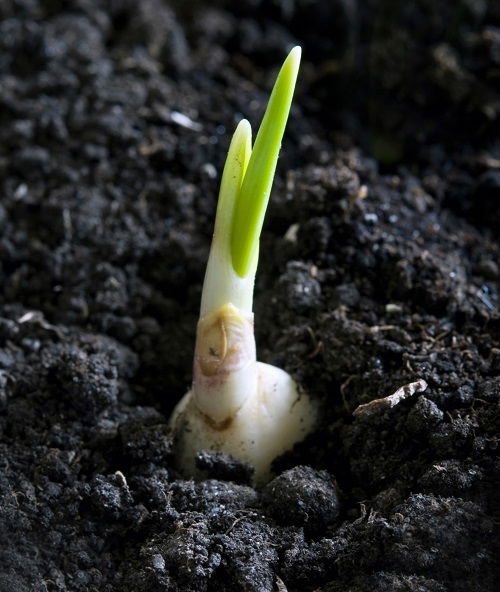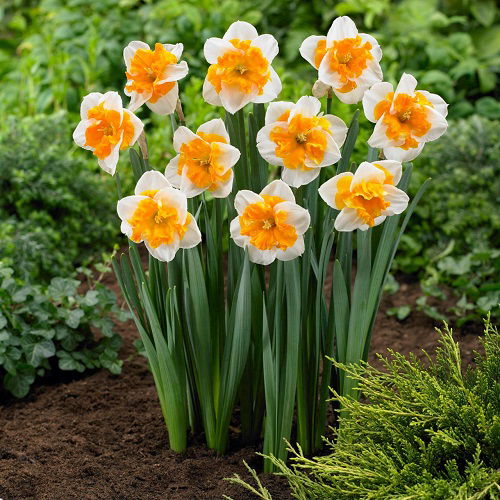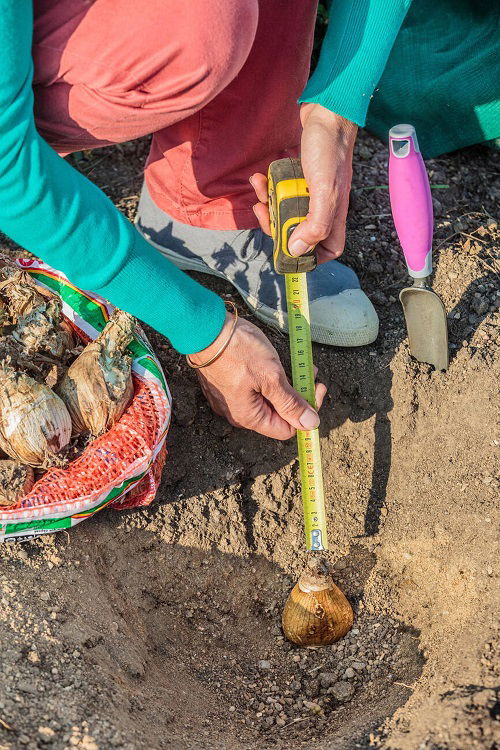Planted Bulbs but see no signs of life? Every bulb prefers a different planting depth. Here’s Why You Should Follow It!
Imagine sleeping on a bed that is too small or large for you to feel cozy and just perfect. It’s the same for bulbs. Planting them at the right depth is like giving them a cozy bed, just like Goldilocks! We show you the right way to do it and why you should follow it!
Planting Depth for Every Bulb
Planting a bulb is more than just tossing it into a hole. The depth at which you plant them directly determines if or not they’ll survive! Typically, it’s good to plant the bulb two to three times as deep as their height. But it isn’t one-size-fits-all, and we will take you through the nuances.
1. Soil Type & Temperature
How deep to plant your bulb depends on the type of soil. In light, sandy soils, the bulb should be planted a few inches deeper. In heavier clay soils, it should be set an inch or two closer to the surface.
A bulb too close to the surface will face all the disruptions occurring outside, including temperature fluctuations. A scorching sun will bake the soil during the day, only for it to cool drastically at night. These extremities will surely hurt your bulb and impair its healthy growth.
2. Root Anchorage
When planted at the right depth, the roots can stabilize the plant and grow vigorously underground. If the bulb is too deep, the shoot will have difficulty emerging from the soil. And as mentioned above, too close to the surface—it may topple over due to rains or winds or scorch and wither away.
At the right distance from the surface, the bulb can store energy, develop strong roots, and eventually produce beautiful blooms.
3. Flowering Success
Most of the bulbs we love produce the prettiest blooms—think tulips, daffodils, hyacinths, and so on! So, what’s the point of planting it simply for its foliage? Because depth influences its blooms as well!
Extra deep planting delays or even kills blooms, especially with smaller bulbs. Your plant runs on nutrients stored in the bulb, which allow it to sprout and emerge through the surface. However, with smaller bulbs, they may even produce blooms once, but typically, they’ll be too weak to do so consistently.
And with shallow planting, they’ll likely develop non-flowering buds, as it commonly occurs with daffodils. This is because all the extremities we spoke about deter the plant from focusing on blooms, keeping it in survival mode.
How to Measure Planting Depth?
The planting depth of bulbs depends on the type. Following these guidelines will increase your chances of successful blooms. Smaller bulbs, like those of grape hyacinths or crocus, don’t need to be planted as deep as larger bulbs like tulips or daffodils.
Now, we know it’s a lot to commit to memory! Always research the plant and variety before you get started. But here’s a quick summary that will surely help.
Common Plant Bulbs and Their Recommended Planting Depth
Plant Bulb Name |
Recommended Depth |
Reason |
Dutch Iris |
3 to 4 inches | Dutch irises prefer moist, sandy to loamy soil. Plant them deep to prevent toppling and protect them from frost. |
Pineapple Lily |
4 to 6 inches | Pineapple lily bulbs are longer in size, and their soil preference is airy and rocky. |
Rain Lily |
1 to 2 inches | Rain lilies have tiny bulbs barely reaching an inch in length. Shallow planting helps them push through the surface and prevents root rot. |
Asiatic Lily |
6 to 8 inches | Asiatic lilies have large bulbs that require depth and space to comfortably grow. They thrive in well-draining loose soil. |
Autumn Crocus |
4 to 6 inches | Autumn crocus performs best in winter when the soil is much drier and coarser. These bulbs need sandy loam or rocky soil. |
Autumn Daffodil |
3 to 5 inches | Autumn daffodils thrive in loamy well-draining soil rich in organic matter. |
Hyacinth |
3 to 4 inches | Hyacinths have larger bulbs and, hence, need more depth. They grow in loose, well-drained soil. |
Anemone |
2 to 3 inches | Anemones usually have smaller bulbs than others, ranging from half an inch to about 2 inches in size. They need loamy soil rich in organic matter. |
Snowdrops |
2 to 3 inches | Snowdrop bulbs must be planted late in fall or early winter. They prefer loamy clay soil that is moist, well-draining, and has lots of leaf mold. |
Freesia |
1 to 2 inches | Freesia have tiny corms ranging from 0.5-1 inch. They are not very picky about soil type as long as it is well-draining. |
Gladiolus |
4 to 6 inches | Gladiolus corms are 1-3 inches big. They need well-draining sandy soil to grow well. |
Exceptions
While every bulb prefers a different planting depth, there are some exceptions to the rules mentioned above. Take a look!
- Guernsey Lily: Its bulb size is about two inches, but it needs to be planted exactly at the surface of the soil.
- Amaryllis: For these bulbs to grow, the upper crown of the corm needs to stick out of the soil. They shouldn’t be completely buried.
- Begonia: Its bulbs grow to about 3-4 inches in size. Plant them about half an inch below the surface of the soil and cover it slightly.
Follow these planting depth guidelines, and your plants are sure to thrive! And if you don’t have enough space to do this, check out these flower bulbs that grow well in containers.







